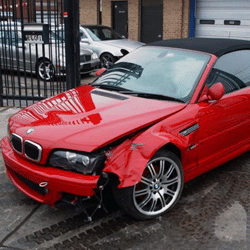Studies have shown a gradual decrease of traffic fatalities over the years. Unfortunately, traffic accidents are still one of the leading causes of death in North America. To help keep you and your passengers safe, here are ten defensive driving tips that go above and beyond the usual guidelines they teach in driving school.
1. Keep Your Distance, Follow the Two-Second Rule
Following the two-second rule is a great way of making sure your car is at a safe distance from other drivers. By giving your car at least “two seconds” of distance from any adjacent cars, this will give you just enough time to react and avoid any sort of accident should the car ahead of you abruptly stop.
2. Be Aware of the Blind Spots of Your Car and Others
It’s important to be aware of your car’s blind spot to make sure no nearby cars are hidden from your view. But you can help other drivers as well by making sure you don’t stay in there blind spot for too long.
3. Look Ahead of You, Not Just In Front of You
Don’t simply rely on the brake lights of the car in front of you to tell you when to hit your own. By being aware of the road ahead, you’ll be able to tell if there’s trouble long before you need to hit the brakes.
4. Don’t Touch the Pedals When Skidding
Skidding is particularly dangerous during the rainy and snowy seasons. However, it’s important not to panic and hits the brakes or the gas when this happens. Instead, quickly compensate by turning the steering wheel towards the direction of the skid. After that, immediately correct the steering wheel as soon you regain control of the car. This is the best way to put your car in the right direction without the risk of tipping over or losing complete control of your car.
5. Lower Visibility Means Lower Speed
Decrease your speed accordingly when it begins to rain or snow, or as soon as your visibility is hampered in any way. Low visibility is a common cause for high-speed traffic accidents, and decreasing your speed is a quick and easy way to avoid that.
6. Speed Can Sometimes Be Safe
While it’s never safe to go above the speed limit, a slow driver can be just as dangerous as a fast one. This is especially true when merging on a freeway. When making your way through a freeway on ramp, you can easily slide into the correct lane by simply matching your speed with the other cars.
7. Pick a Lane and Stick to It
Studies have shown that accidents occur most often during lane changes. To avoid this, change lanes only when necessary and don’t make it a habit to swerve or cut-off other drivers. By recklessly changing lanes you put yourself and others at risk.
8. Green Doesn’t Always Mean Go
Green lights give you the right of way, but it’s not always a guarantee of a safe crossing. Make sure to always take a second to check the intersection before crossing. You never know when a reckless motorist is trying to run a red light.
9. Don’t Drive When Tired
While driving under the influence is always a bad idea, driving when sleepy isn’t any different. When tired, your body has slower reaction times and is slower to pick-up on incoming threats. Be aware of your own energy levels before taking the driver’s seat.
10. Don’t Distract Yourself
Hands-free gadgets have made it safer and easier for drivers to fiddle with their belongings in the car. But it has also encouraged drivers to do it more often. Distractions are one of the leading causes of traffic accidents. So make sure you text, call or change the radio station when you’re not behind the wheel.






